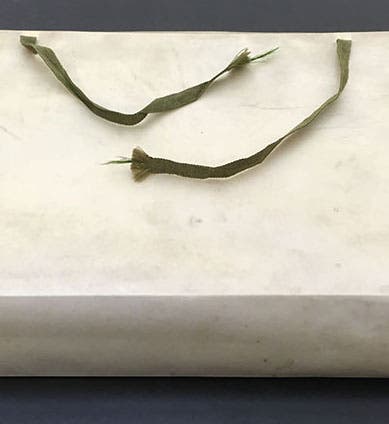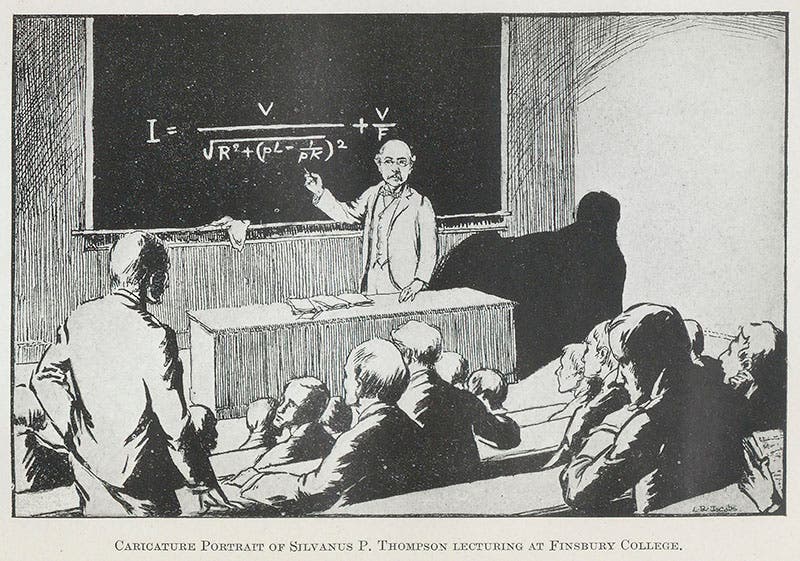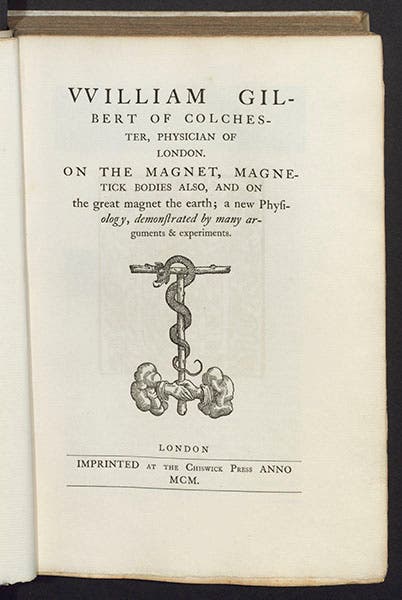Scientist of the Day - Silvanus P. Thompson
Silvanus Phillips Thompson, an English physicist, was born June 19, 1851. Thompson was an accomplished but not brilliant electrical engineer and a fervent advocate of hands-on technical education. He taught at Finsbury Technical College in London (second image). Thompson wrote a number of handbooks and guidebooks on electricity, which must have been popular, because we have multiple editions of each of his titles in the Library. He was also a dynamic lecturer and was invited to give one of the famous Christmas Lectures at the Royal Institution in 1896. He also wrote biographies of Michael Faraday and Lord Kelvin. But for us, his most significant accomplishment was a labor of love, the publication of an English translation of William Gilbert's De magnete.
Gilbert’s book, first published in 1600, is a milestone in the history of science, offering conclusions based on experimental enquiry rather than scholastic tradition. Gilbert was the first to show us that the Earth is a magnet and that a compass is attracted to the Earth's north magnetic pole and not to the North Star, and he argued that the force of magnetism is responsible for the rotation of the Earth, an idea that delighted Johannes Kepler. Gilbert also demonstrated definitively that magnetism and electricity – the lodestone effect and the amber effect – are two completely different kind of phenomena and should not be confused, as they usually were before Gilbert.
Gilbert's book was published in Latin, and it went through two more editions in 1628 and 1633, but all were in Latin. Gilbert was a hero to Thompson, and to nearly everyone working in electromagnetism, but he was hardly known to the general public of 1890. Thompson wanted to rediscover Gilbert for the English people by making De magnete available in English. He organized the Gilbert Club around 1889 and persuaded William Thomson, soon to be Lord Kelvin, to be president of the Club. The sole agenda of the Gilbert Club was to translate Gilbert's book into English and publish it. There were ten translators in all, including Thompson, but everyone agreed that Thompson was the dynamo that kept everything going. He sought out the finest press in England, the Chiswick Press, and they made joint decisions about fonts, tailpieces, illuminated initials, paper, and binding. There was a low point in 1893, when Fleury Mottelay published his own translation of De magnete in New York. But after the shock wore off, Thompson realized, or at least argued, that Mottelay's translation was ordinary and the printing lackluster, and that once their own translation appeared, Mottelay's would quietly disappear.
William Gilbert's On the Magnet was published in 1900, the tercentenary of the publication of the original edition, or at least it carries that date. Thompson was working on a set of end notes about the book and these were published in 1901 (fifth image), and since most copies have the Notes bound up with the translation, it is safe to surmise that the complete bound volume was not available until 1901.
There were 250 copies printed and bound in full vellum, with green ribbons for ties (first image). The binding is beautiful, the font is beautiful, the paper is beautiful. And the translation flows wonderfully. In the field of the history of science, this is the finest translation of a classic that has ever been published. I have little doubt that Herbert Hoover got the idea of translating Agricola's De re metallica upon seeing Thompson's edition of Gilbert. Hoover's 1912 translation is an attractive book, also bound in vellum, but with respect to its paper and type font, it stands in the shadow of Thompson’s edition of Gilbert's On the Magnet.
It is easy to think of Silvanus Thompson as a mere impressario, an orchestrator rather than a thinker, but I personally learned, almost the hard way, that Thompson was a formidable scholar. Many years ago, I wrote an article that showed, among other things, that William Gilbert's famous blacksmith, beating a bar of iron into a magnet (sixth image), was actually based on an 1579 etching by the Dutch artist Marcus Gheeraerts, to illustrate Aesop's fable of the Blacksmith and the Dog. While my paper was out for review, I discovered Thompson's Notes of 1901 and learned, to my horror, that Thompson had made almost the same discovery 80 years earlier, and had even reproduced a version of the Blacksmith and Dog etching (seventh image). I was only saved by the fact that Thompson did not trace the illustration far enough back and did not know that Gheeraerts was its originator, so I was able to rewrite that section of my paper, give Thompson the credit he was due, while still leaving room for my own contribution. We related the saga of the Blacksmith illustration, without mentioning Thompson, and with more visual examples, when Gilbert was our Scientist of the Day two years ago.
We have all three early editions of Gilbert’s De magnete in our Library, plus two copies of Thompson’s 1900 translation. The Chiswick Press 1900 edition, because it is now itself a rare book, was reprinted in 1958 in a lovely slip-cased edition, and we have that as well. We are, it would seem, pretty well set for the next Gilbertian student who wants to pursue some one-stop scholarship.
The caricature of Thompson in the classroom at Finsbury Tech (second image) was taken from Thompson’s posthumous Life and Letters (1920).
Dr. William B. Ashworth, Jr., Consultant for the History of Science, Linda Hall Library and Associate Professor, Department of History, University of Missouri-Kansas City. Comments or corrections are welcome; please direct to ashworthw@umkc.edu.












